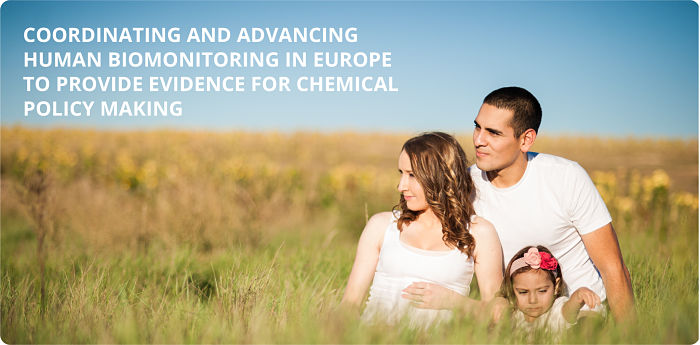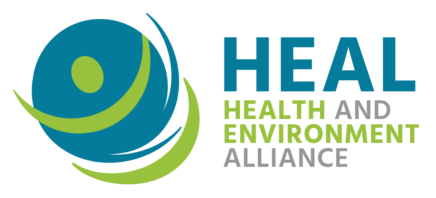As EU member states, regional and local authorities prepare to implement the revised Ambient Air Quality Directive (AAQD), this briefing by the Health and Environment Alliance (HEAL) argues that decision-makers and authorities should pay particular attention to addressing socio-economic inequalities in their clean air efforts. The swift transposition and implementation of the new rules, with strengthened administrative collaboration and the full utilisation of financial support schemes, promise significant progress towards cleaner air across Europe. Improved air quality will be beneficial to everyone and contribute to preventing health inequalities for those living in socioeconomically disadvantaged areas.
HEAL is excited to be an official stakeholder to HBM4EU, the European Human Biomonitoring Initiative. HBM4EU is a joint effort of 28 countries, the European Environment Agency and the European Commission, aiming to investigate the harmful effects of exposure to chemicals and identify policy opportunities to reduce them.
Catherine Ganzleben is the project manager for environment, health and well-being at the European Environment Agency (EEA), one of the official partners and initiators of the HBM4EU project.
2017 saw the kick-off of HBM4EU, the European Human Biomonitoring Initiative. HBM4EU is a joint effort of 28 countries, the European Environment Agency and the European Commission, co-funded under Horizon 2020. HBM4EU will run for five years, from 2017 to 2021.

Led by the German Environment Agency, the initiative is coordinating and advancing human biomonitoring in Europe in order to serve public health objectives. HBM4EU will provide evidence of the actual exposure of citizens to chemicals and the possible health effects in order to support policy making.
The initiative represents a novel collaboration between scientists, chemical risk assessors and risk managers, including several Commission services, EU agencies and representatives from 28 countries, organised as National Hubs in each partner country. The project is building bridges between the research and policy worlds and aims to deliver concrete benefits to society in terms of enhanced chemical safety.
By investigating how exposure to chemicals affects the health of different vulnerable groups, such as children, pregnant women and workers, HBM4EU will generate the scientific evidence base for targeted policies to protect health. As such, the initiative directly contributes to the improvement of health and well-being for all citizens.
Data used and produced under HBM4EU will publically accessible via IPCHEM – the Information Platform for Chemical Monitoring. IPCHEM is the European Commission’s reference access point for searching, accessing and retrieving chemical occurrence data. Our aim is to share project results and promote the use and reuse of human biomonitoring data generated with public funds by a range of actors, including scientists, policy makers and stakeholders.
2017 has been a productive year, focused on establishing cooperation within our broad network of partners, policy makers and stakeholders. Engagement with stakeholders, including non-governmental organisations representing environmental, health and consumer priorities, as well as trade unions and representatives of industry, is crucial to the success and sustainability of the HBM4EU project.
The Stakeholder Forum is the formal channel for stakeholder input to the HBM4EU project, established in May 2017. The members of the Stakeholder Forum include the following:
• Chem Trust
• Downstream Users of Chemicals Co-ordination Group (DUCC)
• Eurometaux
• European Association of Craft, Small and Medium-Sized Enterprises (UAPME)
• European Chemical Industry Council (CEFIC)
• European Consumer Organisation (BEUC)
• European Environment Bureau (EEB)
• European Federation of Allergy and Airways Diseases Patients’ Associations (EFA)
• European Trade Union Confederation (ETUC)
• Health and Environment Alliance (HEAL)
• Women in Europe for a Common Future (WECF)
In terms of the chemicals to be addressed, the 1st list of prioritized substance group includes:
• Phthalates and Hexamoll® DINCH,
• Bisphenols,
• Per-/polyfluorinated compounds,
• Flame retardants,
• Cadmium and chromium VI,
• PAHs,
• Aniline family,
• Chemical mixtures, and
• Emerging substances.
HBM4EU is now identifying chemicals for inclusion on a 2nd list of HBM4EU priority substances, to be the subject of research activities from 2019 to 2021. In 2017, members of the Stakeholder Forum were invited to nominate their priorities for research under HBM4EU, together with policy makers and the National Hubs in the 28 HBM4EU partner countries.
HBM4EU partners are now systematically assessing the nominated substances against a set of prioritisation criteria, including hazardous properties, exposure levels in Europe, regulatory status, public concern and technical feasibility. The 2nd list of HBM4EU priority substances will be agreed in April 2018.
For further information, you can visit the HBM4EU website providing detailed information about project governance, the substances, partners, information for stakeholders and featuring an online library.
There is also the opportunity to follow HBM4EU on Twitter and Facebook, featuring interesting updates and news on human biomonitoring and chemical regulation.



